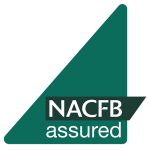There are several options available to landlords in the UK for financing their rental properties. Some of the most common include:
- Buy-to-let mortgage: This is a type of mortgage specifically designed for landlords who want to buy a property to rent out.
- Bridging loan: This is a short-term loan that is used to bridge the gap between buying a property and securing long-term financing.
- Remortgaging: This involves taking out a new mortgage to pay off an existing one, often with the goal of securing a lower interest rate or more favourable terms. Also raising additional funds to use as a deposit on a new investment property.
- Savings: Some landlords may choose to fund their rental property purchase using their own savings or other financial resources.
It’s important for landlords to carefully consider their options and choose the financing solution that is most appropriate for their needs and circumstances.
What is a portfolio mortgage?
A portfolio mortgage makes it easier for landlords to manage their buy to let mortgages as they can have all their mortgages through one lender, either as one account or multiple sub accounts. This lender will then assess the total value of the portfolio and mortgages and determine an overall loan to value amount. Additionally, landlords can make one payment to cover all mortgages rather than having to make separate payments for each one.
For a mortgage lender, a property portfolio usually means 4 or more properties. For an individual they may see less as their personal portfolio, including their own residential property.
Do you need finance for your property portfolio?
Or call and speak to one of our specialist brokers on 0800 316 2224
The Advantages of a portfolio mortgage
- You can simplify your outgoings by having one lender and monthly payment to deal with.
- A portfolio could be more tax efficient for you
- You can use equity to buy more properties or improve the current ones
Remortgaging an investment property
Remortgaging an investment or Buy to Let property involves taking out a new mortgage to pay off an existing one, often with the goal of securing a lower interest rate, more favourable terms, or both. Property Remortgaging can be an effective way for landlords to improve their financial situation and make their rental properties more profitable.
There are a few key things to consider when Remortgaging a property portfolio:
- Timing: It’s important to consider the timing of the Remortgage, as well as the current market conditions. For example, Remortgaging when interest rates are low can result in significant savings.
- Costs: It’s important to carefully consider the costs associated with Remortgaging, including any fees or closing costs.
- Mortgage terms: Landlords should compare the terms of the new mortgage with their existing loan to ensure that they are getting a good deal.
- Property value: The value of the rental properties in the portfolio will also be a factor in the Remortgaging process. Lenders will typically require an appraisal to determine the value of the properties.
- Credit score: Landlords should work to improve their credit score before Remortgaging to qualify for the best terms and rates.
It’s important for landlords to carefully consider their options and do their research before Remortgaging investment property . Seeking the advice of a financial professional may also be helpful.
Landlords refurbishment finance options
There are several options available to landlords in the UK for financing refurbishment projects on their rental properties. Some of the most common include:
- Buy-to-let mortgage: A buy-to-let mortgage can be used to fund refurbishment projects on a rental property, as long as the work is completed within a certain timeframe and meets certain guidelines.
- Home improvement loan: A home improvement loan is a type of personal loan that can be used to fund refurbishment projects on a rental property.
- Bridging loan: A bridging loan is a short-term loan that is used to bridge the gap between buying a property and securing long-term financing. It can be used to fund refurbishment projects on a rental property.
- Remortgaging: Remortgaging involves taking out a new mortgage to pay off an existing one, at the same time, you could borrow more to do work on the current property, other properties or fund a deposit for a new investment purchase.
- Savings: Some landlords may choose to fund their refurbishment project using their own savings or other financial resources.
It’s important for landlords to carefully consider their options and choose the financing solution that is most appropriate for their needs and circumstances. Seeking the advice of a financial professional may also be helpful.
What’s the difference between renovations and refurbishment?
Renovations and refurbishment are similar in that they both involve making improvements or updates to a property. However, there are some subtle differences between the two terms.
Renovations typically refer to making significant changes or updates to a property, such as adding a new room or updating an outdated kitchen. Renovations often involve more extensive work and may require building permits and other approvals.
Refurbishment, on the other hand, typically refers to making smaller improvements or updates to a property, such as painting, replacing flooring, or updating fixtures. Refurbishment may also involve cleaning and repairing existing features of the property.
In general, renovations are more extensive and may require more time, money, and resources to complete, while refurbishment is typically less extensive and may be more focused on cosmetic improvements.
Can you use a mortgage to refurbish a buy-to-let property?
It is possible to use a buy-to-let mortgage to fund refurbishment projects on a rental property, as long as the work is completed within a certain timeframe and meets certain guidelines. However, it’s important to note that not all buy-to-let mortgages allow for refurbishment financing, so landlords should check with their lender to see if this is an option.
If refurbishment financing is available through a buy-to-let mortgage, the lender will typically require the landlord to provide a detailed plan for the work, including a budget and timeline. The lender may also require the landlord to provide proof that the work has been completed as planned.
It’s important for landlords to carefully consider their options and choose the financing solution that is most appropriate for their needs and circumstances. Seeking the advice of a financial professional may also be helpful.
Energy efficiency & EPC C+ refurbishment for landlords
Improving the energy efficiency of a rental property can be a beneficial refurbishment for landlords, as it can help reduce energy costs for tenants and make the property more attractive to potential renters. Here are a few energy efficiency refurbishment options for landlords to consider:
- Insulation: Adding or improving insulation in the walls, attic, and floor can help keep the property warm in the winter and cool in the summer, reducing energy costs.
- Windows and doors: Upgrading to energy-efficient windows and doors can help reduce heat loss in the winter and heat gain in the summer.
- Heating and cooling systems: Replacing an outdated heating and cooling system with a more energy-efficient model can help reduce energy costs.
- Appliances: Upgrading to Energy Star-certified appliances can help reduce energy usage and costs.
- Lighting: Installing LED light bulbs and adding task lighting can help reduce energy usage.
It’s important for landlords to carefully consider the potential costs and benefits of energy efficiency refurbishments, and to choose the most cost-effective options that will have the greatest impact on energy efficiency.
Do you need finance for your property portfolio?
Or call and speak to one of our specialist brokers on 0800 316 2224




















